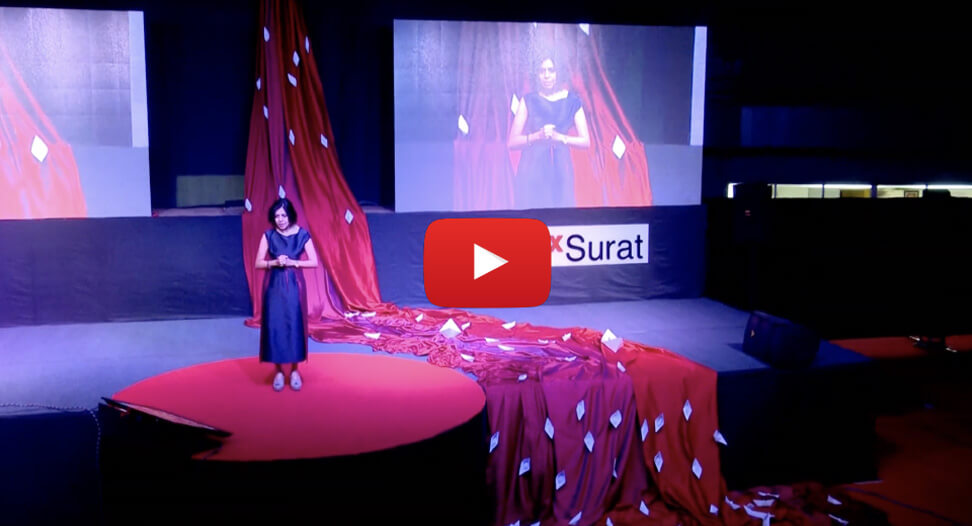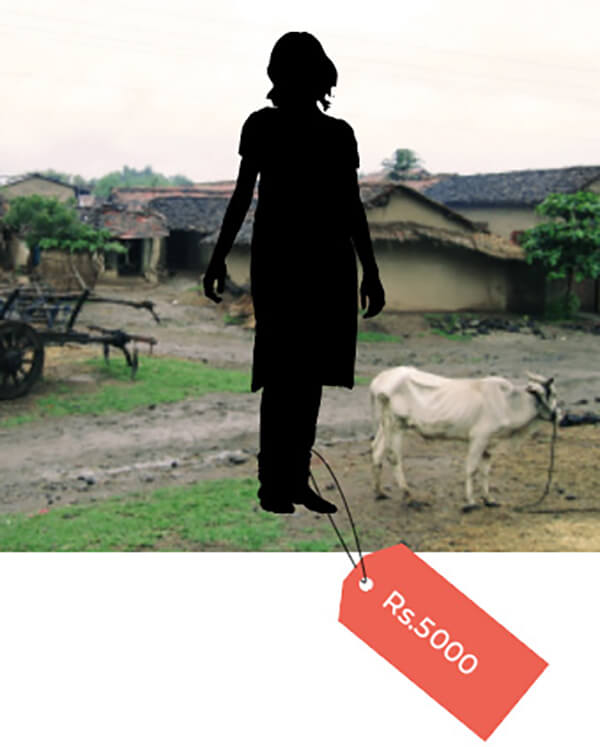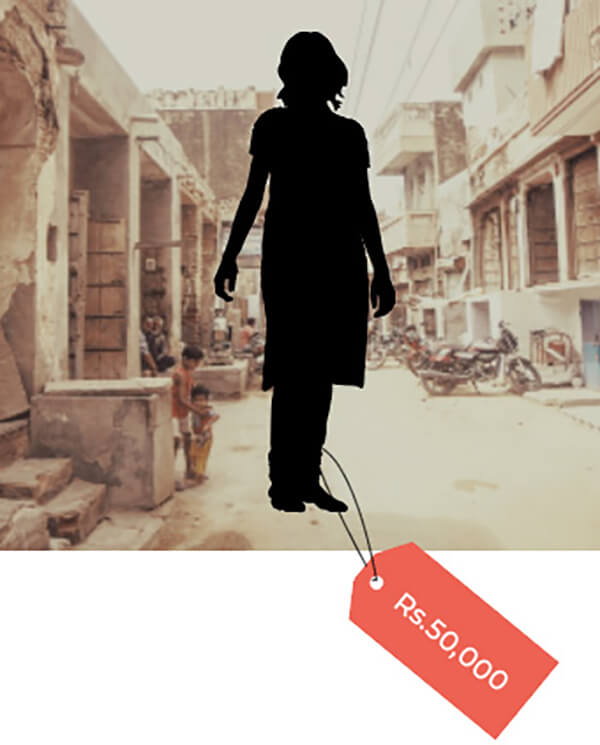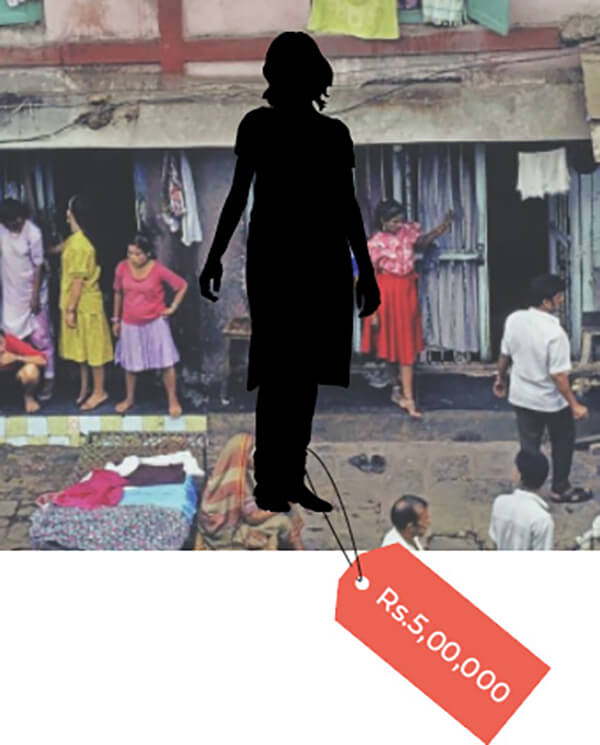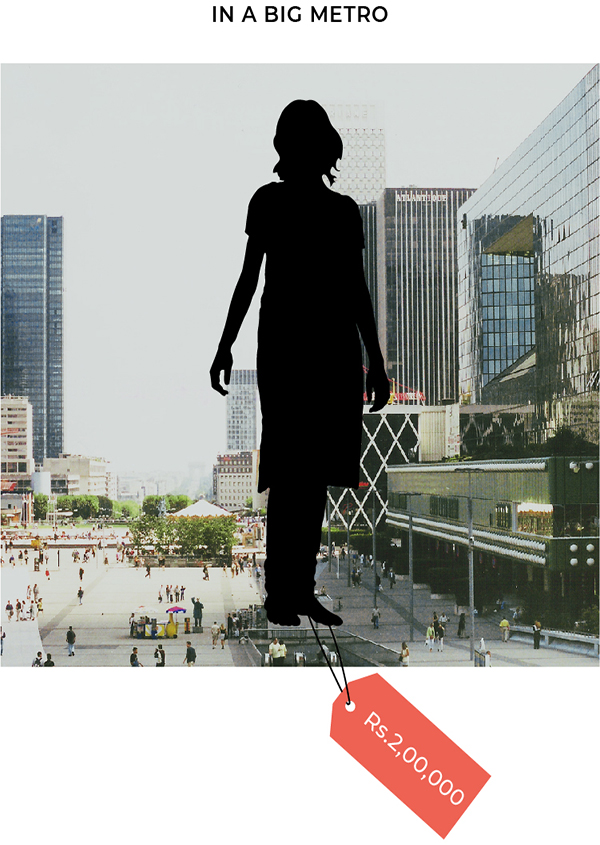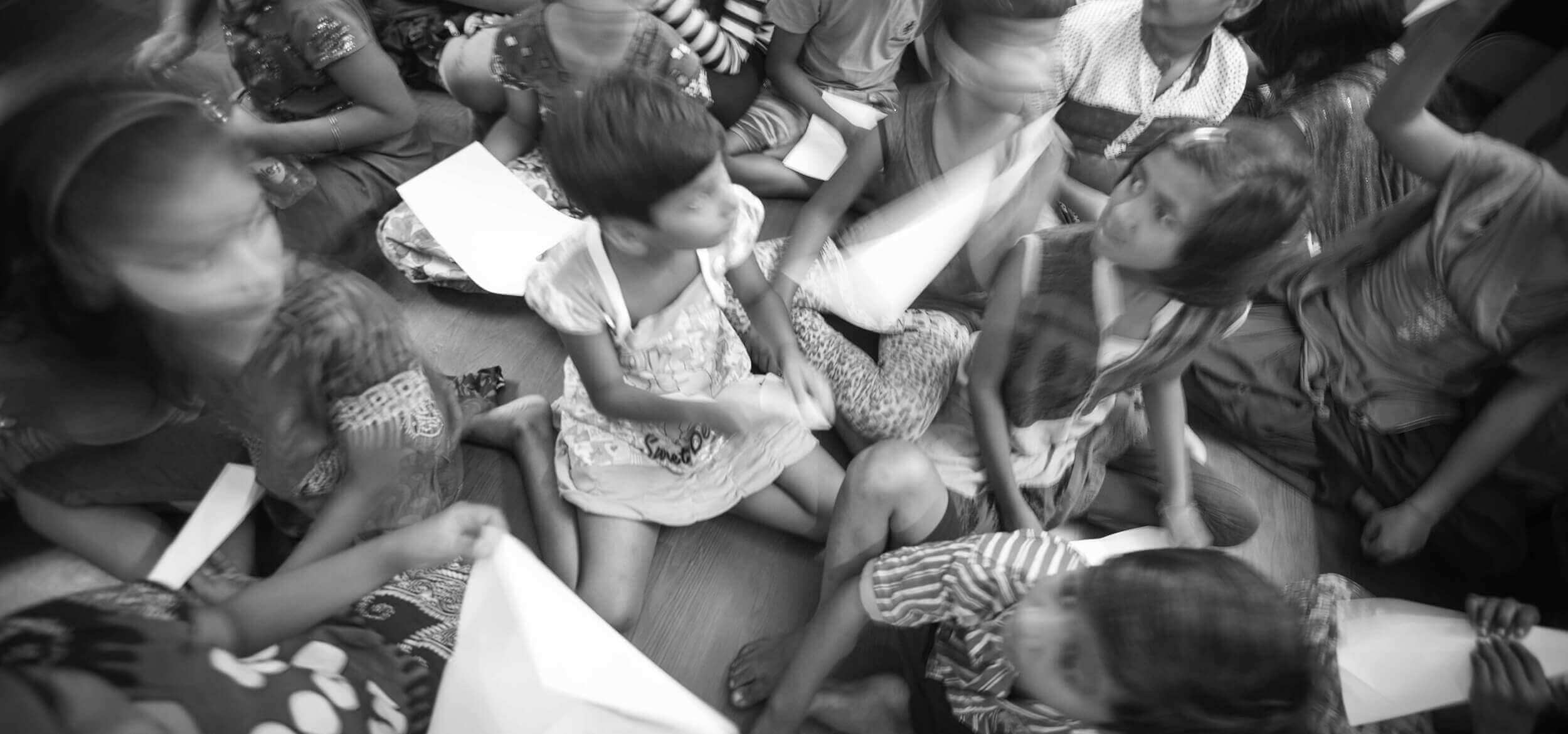
Sex trafficking is demand driven.
South Asia, with India at its centre, is one of the fastest growing regions for human trafficking today.
It is not confined to brothels anymore. It is happening everywhere, yet is hidden from plain sight.
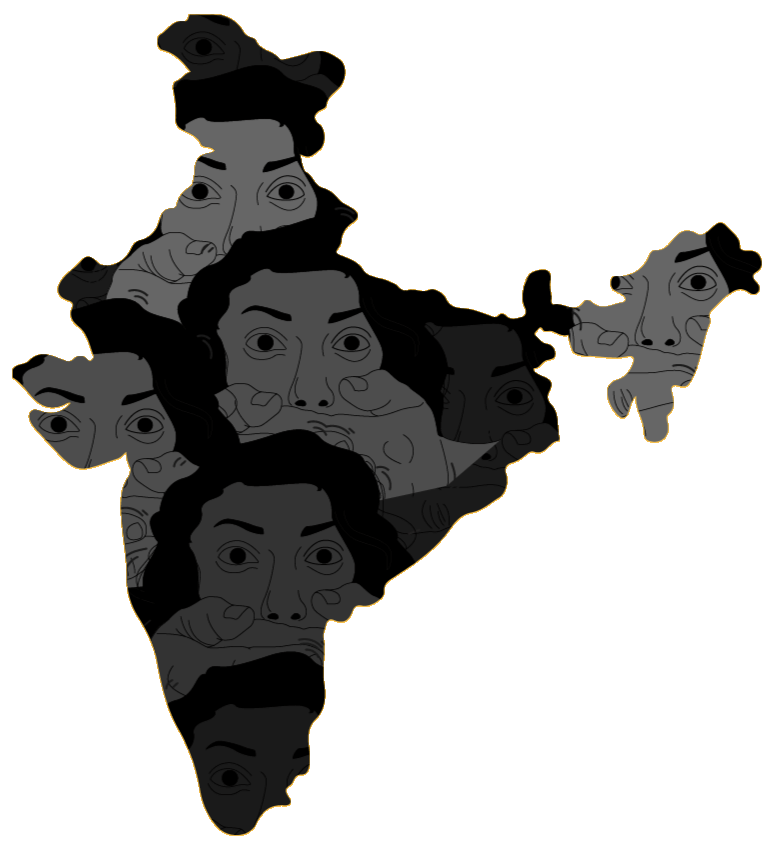
THE SITUATION IN INDIA
-
16M
Number of victims
that live in India -
98%
Victims that are
women and girls -
51%
Victims that
are minors -
25%
Rate of growth
of trafficking in India
A word from our founder,
Leena Kejriwal
We believe that our behaviors, our attitudes, our society and culture
are unconsciously shaped by the tools and the technologies we use.
It is very important for us not have “the tools shaping us” passively.
The Price of Flesh
A trafficker finds major financial gains in the supply part with little or negligible risk. Unlike narcoticsor weapons,
a human being, unfortunately, can be exploited again and again. The flesh trade puts a price tag on the lives
of young women, making their traffickers wealthier.
They can be sold anywhere, from a village to a city, for increasing amounts of money.
A brothel owner makes anywhere from Rs. 7 Lakhs and Rs. 10 Lakhs per year.

Pornography
Easy online access has also made porn easily available to young people in India. It is often the most common solution for answers on sexual curiosity, especially in teenagers. However, early access to porn can lead to a warped view of sex.
It is also predisposing teenagers towards risky sexual behaviours, making them an easy target for sexual predators.
- India is the fifth largest user of porn and fourth largest user of porn on mobiles
- Under Section 67 of Information Technology Act 2000, pornography is held as a punishable offence
- 48% Indians think it is socially acceptable
- 57% are unaware of the role pornography plays in sex trafficking
Demand for pornography = Demand for sex trafficking
Demand Makers
Trafficking is primarily Demand driven. The demand created by the public leads to supply.
There is no age bar for the ones who create the demand; it can even be anyone from an adolescent
to an 80-year-old. We are all a part of this new social fabric which is driving the growing numbers
of sex trafficking of much younger girls and victims. And we drive it by every choice we make.
-
1. Labels
The language we use often adds to this demand. Certain words like ‘prostitute’ and ‘sex-work’ provide a false impression that victims choose to be exploited. Phrases like these keep the public away from any guilt and increase the demand.
-
3.2. Our Role
Are we making responsible choices?
Do you think you are not part of this vicious circle?
Did you know that in your passiveness and inaction,
you are perpetrators of the crime?
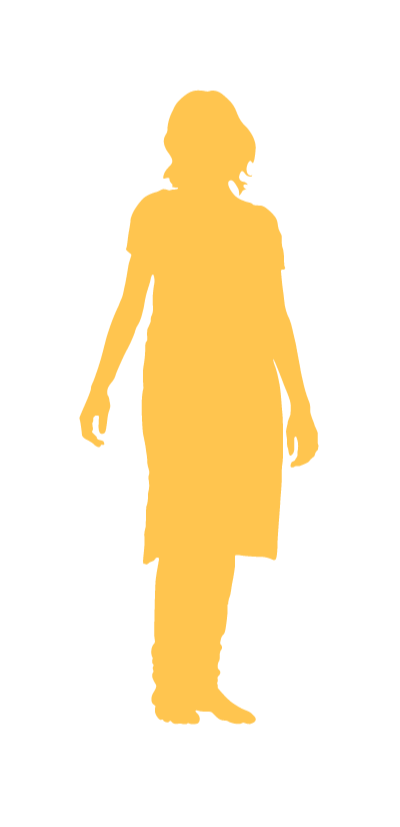
-
2.
3. ConditioningSocial media is driving the growing pressure for an adolescent today. There is a constant struggle to ‘look’ appealing at all times. The tug of war between “Hot or Not” is constant. This focus on hypersexualization is makes them an easy target
for any trafficker. -
4. Do you
1. Watch porn?
2. Forward porn?
3. Enjoy or share rape jokes?
4. Think men are better than women?
5. Think selling your body for sex is a choice?If your answer is yes, you might play a bigger role in sex trafficking than you think.
Our Experience and Research
Sex trafficking is the fastest growing and second largest criminal industry in the world. In India, it is an epidemic. Technology is playing a crucial role by making it more difficult to track traffickers and equally easy for young girls to become victims of sex trafficking in both urban and rural areas.
A trafficker can lure a young girl, simply by typing on his phone and without leaving his home. The trust-building phase of the recruitment process is increasingly being done online. Traffickers send out texts to multiple girls at the same time and keep the conversation going parallelly and then zoom in on the right one at the right moment.
come with me
mumbai
i will take care of everything
are you sure?!
when can we go to mumbai
Online predators will contact 77% of youth by the age of 14
and 22% of children between the ages of 10 and 13.
There are 290 million internet users in rural India, mobile phones being the most common enabler. Literacy is no longer an obstacle with voice searches being the adopted search tool. Paradoxically, remoteness and poverty still play a key role making the rural yet connected communities extremely vulnerable.
Traffickers prey on their aspirations of a better life in cities, luring young women and girls to fall into their traps.
